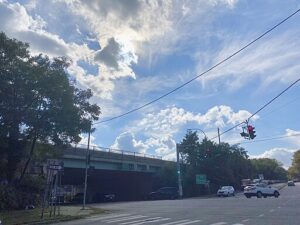By Madeline Armstrong
Dozens of cats can be seen roaming the streets in many areas of Long Island. There are hundreds of thousands of feral cats in Nassau County alone that are forced to live in treacherous conditions.
Cats that were formerly domesticated or born into the wild must fend for themselves when it comes to food and shelter. The survivability rate is low for feral cats, with many of them dying from starvation, cold, animal attacks and car strikes. The population, however, just keeps growing.
If the cats are not spayed and neutered, they will procreate, exacerbating the problem.
“Kittens are born in the wild with unhealthy conditions,” said Dr. Laura Gay Senk, a Long Island veterinarian. “Shortly after the kittens are born, half of them die because of the conditions. Seventy-five percent of the kittens left will die within six months. They die of starvation, illness, injury, cruelty, poisonings and all the wrath that human nature brings upon our animals.”
Many individuals will say that these cats are at their happiest living in the wild, doing what they want to do. To this, Senk says, “It’s not their choice, it’s their predicament.”
To address this issue, Senk advocates for TNR (trap, neuter, release). This is where individuals will trap feral cats, have them spayed and neutered, and then release them back to where they were found. This way the population will not grow.
The Town of Hempstead animal shelter has a program whereby people can bring in feral cats that they have trapped, and a veterinarian at the shelter will spay or neuter the cats and keep them for the recovery period — three days for a female cat and one day for a male cat.
“Town of Hempstead, you could drop the cat off any time,” Senk said. “They do surgeries every day on the feral cats. They will hold them overnight.”
The Town of North Hempstead animal shelter, though, does not take cats.
“What we were told is that the existing shelters can’t accommodate cats and that they did research and cats spread more diseases than dogs,” said Nina Gordon, a cat trapper and North Hempstead resident.
“Shortly after the kittens are born, half of them die because of the conditions. Seventy-five percent of the kittens left will die within six months. They die of starvation, illness, injury, cruelty, poisonings and all the wrath that human nature brings upon our animals.”
Dr. Laura Gay Senk, Long Island veterinarian
Gordon worked trapping cats in Queens and was astounded by the lack of resources for feral cats upon moving to North Hempstead.
“In Queens, you’re in the City of New York, and there are shelters where if you trap a cat, there’s a place to go,” Gordon said. “The animal shelter here doesn’t take cats, and that’s kind of crazy. Every other shelter on Long Island takes cats.”
In a response to other trappers’ complaints, the Town of North Hempstead animal shelter contracted out to Diane Levitan, executive director and veterinarian at Helping Paw, to park her van outside the shelter once a month, and trappers can bring the cats to be spayed and neutered for free.
“We spay, we neuter, we ear tip, we vaccinate, and we treat for parasites and we tattoo so they can be recognized as already spayed and neutered,” Levitan said. Ear tipping is a practice whereby a feral cat has the tip of one ear clipped to indicate that it is a wild cat.
Levitan sees about 50 cats each month, and there is always a demand. However, she does not keep the cats for the recovery period. Therefore, the trappers are responsible for caring for the feral cats post recovery.
The lack of services in North Hempstead puts most of the burden on the trappers, who are all volunteers. They must trap the cats, either keep them until a spay/neuter day with Levitan or pay out of pocket for the veterinarian to do it at a clinic and keep the cat for the recovery period before returning it.
“It’s extremely time-consuming and difficult,” Gordon said. “It would be so much easier if we actually had a shelter and place for them to recover after they’ve been spayed and neutered.”
Gordon said that not only does North Hempstead’s lack of a shelter cause problems for feral cats, but also there is no sanctuary for domesticated cats that have been abandoned.
Gordon said that she was feeding the cat of an elderly woman who had a stay in the hospital. However, it was eventually decided that the woman would reside in a nursing home, leaving the cat without a home.
In most places, Gordon would have just taken the cat to the town shelter. However, in North Hempstead, this was not possible.
Gordon ended up coordinating with the woman’s daughter to send the cat to a sanctuary that required a $5,000 donation.
“This required the coordination of three or four people and a donation of $5,000 from this daughter,” Gordon said. “The Town of North Hempstead is one of the most affluent towns on Long Island. Why can’t we do something about this?”
Stuart Kroll, another cat trapper in North Hempstead, has taken to protesting in front of town hall and recruiting other community members to bring the issue to the attention of the town council.
“[Our] Priority is educating the public and our municipal leaders,” Senk said. “All these not-for-profits, rescuers, trappers, they are doing what is the responsibility of our municipal leaders.”
Kroll said he finds the lack of compassion alarming and expects more from the town council and urges community members to speak up and show up. Until then, feral cats will continue to struggle to survive in North Hempstead.









